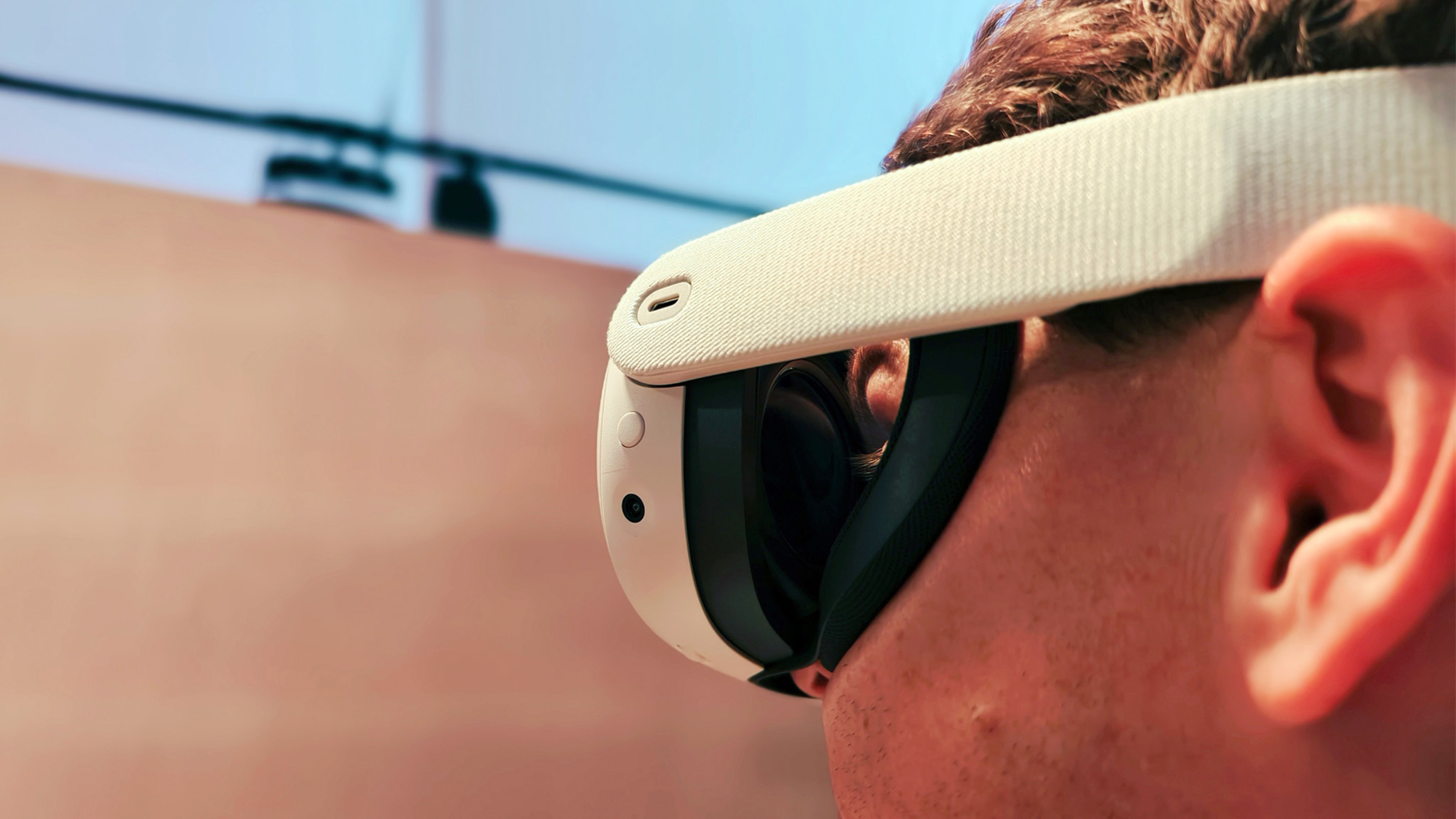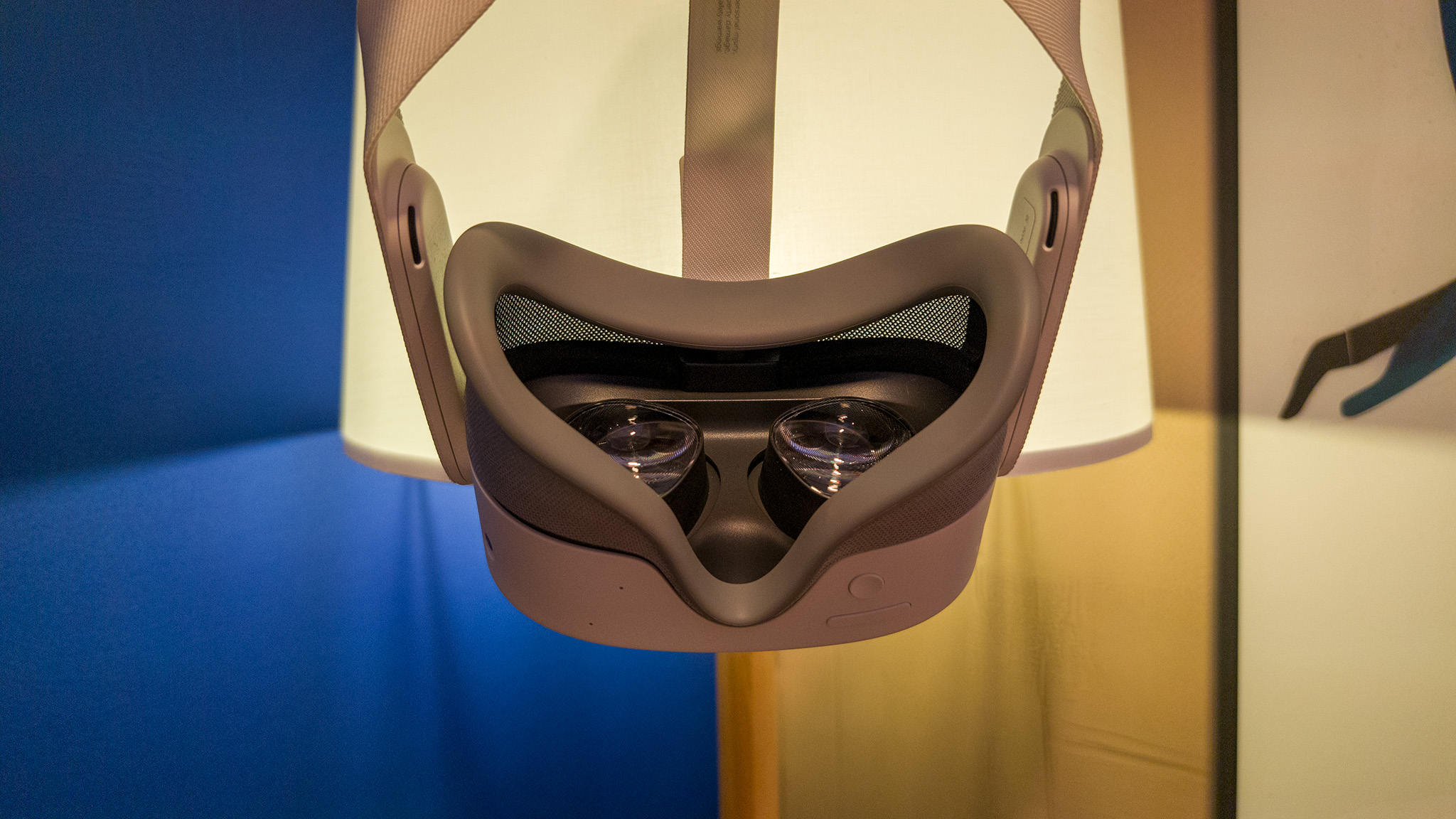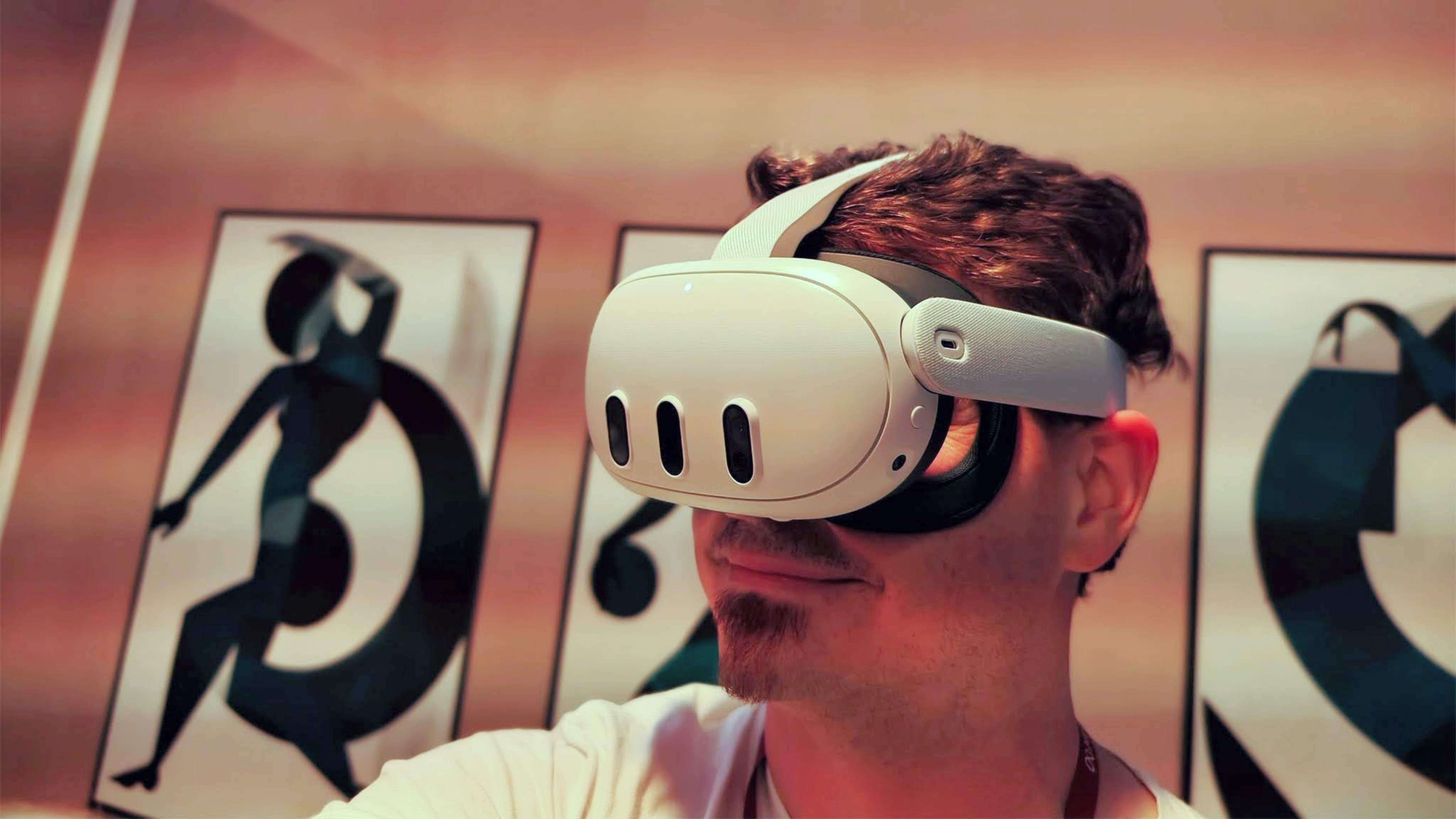Meta's new open facial interface for the Quest 3 will succeed the Quest Pro
The open-air design is preferred by many VR users, and resembles the Quest Pro.

What you need to know
- Meta will sell a $40 "open facial interface" for the Meta Quest 3 that offers an open periphery.
- Though there is still padding for the wearer's face, a gap helps eliminate lens fogging and offer a view of their surroundings.
- The open facial interface attempts to fill the gap left by the Meta Quest Pro, which is set to be discontinued.
All eyes were on Orion and the Quest 3S at Meta Connect 2024, but a new way to wear the Meta Quest 3 has the potential to be one of the biggest drops of the conference. Meta announced it is selling an official "open facial interface" for the Quest 3, which will give it an open-periphery experience similar to that of the Meta Quest Pro. When the Quest Pro is soon discontinued, the Quest 3 plus the open facial interface will be the official way to comfortably enjoy a Meta headset with open sides.
The open facial interface costs $40, and can be pre-ordered from Meta's website. If you order now, the estimated ship date is currently set for mid-October. Unfortunately, the open facial interface is only compatible with the Quest 3, not the new Quest 3S. The cheaper Quest 3S does have a "breathable facial interface" available, but the open design of the new Quest 3 facial interface could've given users the illusion of a wider field-of-view.
Now, there are three official ways to wear the Meta Quest 3. There's the default facial interface that comes in the box with the Quest 3, which is designed for everyday use. Then, you have the silicone facial interface sold separately for $40, made for workouts and high-activity games. The new entrant into the lineup is the open facial interface, which Meta says is best for spatial experiences. For what it's worth, the open facial interface is also the lightest of the trio, weighing just 60 grams.

Android Central's own Nick Sutrich tried the new open facial interface at Meta Connect, and recounted that it completely eliminated lens fogging issues. Additionally, it gave the feel of an open periphery, yet it didn't quite match the Quest Pro experience. The open sides of the Quest Pro leave nothing touching your face, but there is facial padding on the open facial interface for the Meta Quest 3.
Interestingly, the breathable facial interface for the Meta Quest 3S also eliminated lens fogging. It doesn't provide the same level of open periphery as the open facial interface, since it's fully enclosed. However, since the breathable fabric does allow for some light to come through, it gives the wearer a sense of soft periphery.

These new ways to wear the Meta Quest 3, and the more affordable Quest 3S, will be crucial as we head into the next year. The 128GB Quest 3 and the Quest Pro are set to be discontinued, so the 512GB Quest 3 plus the open facial interface will be the official way to get open periphery during spatial experiences moving forward.
The open facial interface will enable better mixed-reality experiences

Meta's approach to designing the open facial interface tries to blend the best of open periphery and enclosed fabric seals. Third-party solutions already exist to help Meta Quest 3 owners use their headset without a facial interface, but Meta's intention is to give users the comfort and stability of a facial interface while providing open side views. Again, it's not quite like the Meta Quest Pro, although the idea is similar.
Get the latest news from Android Central, your trusted companion in the world of Android
It's impossible to compare the Meta Quest 3 and the Apple Vision Pro headsets, and yet it's clear that the latter and visionOS are impacting the former. Meta is trying out and pushing spatial experiences on the Quest 3 more since Vision Pro was released. As Apple Vision Pro owners have learned, spatial experiences that use mixed reality or simply passthrough video are better with open periphery. Where the displays end, your peripheral vision begins.
So, for those that like to use their Meta Quest 3 for spatial computing or mixed-reality experiences, the $40 open facial interface could be a game-changer. There will surely be people who are still interested in using their Quest 3 without a facial interface at all, but Meta is offering a best-of-both-worlds solution. You can eliminate lens fogging and view your surroundings with the open facial interface and preserve comfort at the same time.
Even with the open facial interface, Meta will still be leaving a hole in its virtual reality lineup when the Quest Pro is discontinued. It wasn't a success by any means, but its open feel did make for a one-of-a-kind experience. For now, the $40 open facial interface and the $500 Meta Quest 3 will have to do.

Brady is a tech journalist for Android Central, with a focus on news, phones, tablets, audio, wearables, and software. He has spent the last three years reporting and commenting on all things related to consumer technology for various publications. Brady graduated from St. John's University with a bachelor's degree in journalism. His work has been published in XDA, Android Police, Tech Advisor, iMore, Screen Rant, and Android Headlines. When he isn't experimenting with the latest tech, you can find Brady running or watching Big East basketball.
You must confirm your public display name before commenting
Please logout and then login again, you will then be prompted to enter your display name.
